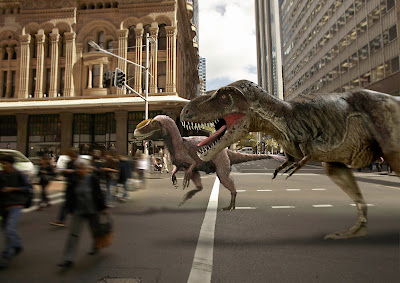by Paul Buchheit
We live in a society that allows one man to make
$15 million a day while a low-income mother gets
$4.50 a day for food, and much of Congress wants to
cut the $4.50.
Are political and corporate leaders even
remotely aware of the conditions of society beneath the wealthiest 10% or so?
The following are some of the victims of an economic system that has forgotten the majority of its people.
Children
One out of every five American children now
lives in poverty, and for black children it's nearly
one out of TWO. Almost
half of
food stamp recipients are children.
UNICEF places us near the bottom of the developed world in the inequality of children's well-being, and the
OECD found that we have more child poverty than all but 3 of 30 developed countries. It's rather embarrassing to view the charts.
Students
Over the last 12 years, according to a
New York Times
report, the United States has gone from having the highest share of
employed 25- to 34-year-olds among large, wealthy economies to having
among the lowest. The number of college grads
working for minimum wage has
doubled in just five years.
Higher education was cut by nearly
$17 billion in the years leading up to 2012-13. Through those same years large corporations were
avoiding about $14 billion annually in taxes. To make up the difference, students face tuition costs that have risen almost
ten times faster than median family income, leading them into their low-wage post-college positions with an average of
$26,000 in student loan debt.
The Elderly
Three-quarters of Americans approaching retirement in 2010 had an average of
less than $30,000 in their retirement accounts. The percentage of elderly (75 to 84) Americans experiencing poverty for the first time
doubled from 2005 to 2009.
The folly of cutting Social Security is reflected in two facts.
First, even though Social Security provides only an average benefit of
$15,000, it accounts for
55 percent
of annual income for the elderly. And second, seniors have spent their
working lives paying for their retirement. According to the
Urban Institute
the average two-earner couple making average wages throughout their
lifetimes will receive less in Social Security benefits than they paid
in. Same for single males. Almost the same for single females.
Wage Earners
Workers have
30% LESS buying power today than in 1968. If the minimum wage had kept up with employee productivity, it would be
$16.54 per hour instead of $7.25.
Almost unimaginably, conditions for workers have gotten even worse
since the recession. While 21 percent of job losses since 2008 were
considered low-wage positions,
58 percent of jobs added during the recovery were considered low-wage.
As for members of Congress who say "get a job," only one of them was present at the start of a recent
unemployment hearing.
The Sick and Disabled
Over 200 recent
studies have confirmed a link between financial stress and sickness. In just 20 years America's ranking among developed countries
dropped on nearly every major health measure. Victims suffer both physically and mentally. A recent
study
found that unemployment, whether voluntary or involuntary, can
significantly impact a person's mental health. Even grimmer, from 1999
to 2010 the
suicide rate among Americans ages 35 to 64 increased by almost 30 percent.
In the long run, the only Americans to
increase their life expectancy have been seniors covered by Medicare.
Women
Recent figures from the
Bureau of Labor Statistics reveal that women earn just 80% of men's pay. In Washington, DC and California, Hispanic women make only
44 cents
for every dollar made by white men. The only deviation from the norm is
that in 47 of 50 large metropolitan areas, well-educated single
childless women under 30 earn more than their male counterparts.
But the overall disparities have worsened since the recession, with only about
one-fifth of new jobs going to women, and with
median wealth
for single black and Hispanic women falling to a little over $100. And
there's no respite with advancing age. The average American woman's
retirement account is 38 percent
less than a man's, and women over 65 have
twice the poverty rate of men.
Minorities
The Economist states:
Before
the 1960s...most blacks were poor, few served in public office and
almost none were to be found flourishing at the nation's top
universities, corporations, law firms and banks. None of that is true
today.
Wrong. Much of that is true today. According to the
Economic Policy Institute (EPI), median wealth for black families in 2009 was $2,200, compared to $97,900 for white families. (
Pew Research
reported $5,677 for blacks, $113,149 for whites). EPI said median
financial wealth (stocks, etc.) was $200 for blacks, compared to $36,100
for whites.
Since the recession, black and Hispanic wealth has dropped further, by
30 to 40 percent, while white family wealth dropped 11 percent.
Blacks and Hispanics, with
29% of the population, are also severely under-represented on
corporate boards and in
higher education.
One of the reasons it's so hard for young blacks to be successful is
that they're viewed as criminals by many white authority figures. In
The New Jim Crow, Michelle Alexander
documents the explosion of the prison population for drug offenses,
with blacks and Hispanics the main targets even though they use drugs at
about the same -- or
lesser --
rate as white Americans.
The Homeless
The super-rich want homeless people to get jobs. But they don't want
to pay taxes to support job creation. If the richest Americans - the
Forbes 400 - had paid a 5% tax on their 2012
investment earnings, enough revenue would have been generated to provide a full-time minimum wage job for
every person who was
homeless in America on a January night in 2012.
Instead, it keeps getting worse for the homeless. North Carolina made it a
crime to feed them. Columbia, South Carolina approved a plan to
remove them. Tampa, Florida passed a law that makes it a
crime for them to sleep in public.
So who's left after all this? Oh yes, rich white men.









